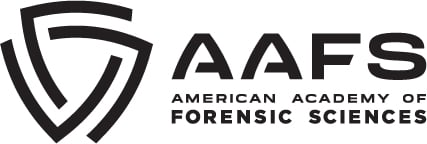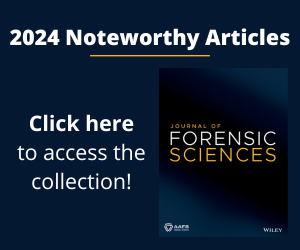JFS Virtual Issue to Celebrate National Forensic Science Week
I am delighted to write this introduction to the
Journal of Forensic Sciences (JFS) Virtual Issue to Celebrate National Forensic Science Week, that marks the 15th anniversary of the landmark report published by the National Academy of Sciences (NAS),
Strengthening Forensic Science in the United States: A Path Forward (1). The report was the first to present the results of rigorous, expert scientific review of forensic sciences. Until the NAS report, forensic science was tested, appraised, and measured by standards and principles described in law, rather than in the scientific method. The NAS report, in its 13 recommendations, stated that there was a clear need for fundamental research to be undertaken to provide an empirical evidence base for many forensic disciplines (with the notable exception of nuclear DNA), especially those relying on the comparison of patterns – bitemark comparisons, microscopic hair analysis, shoe print comparisons, handwriting comparisons, fingerprint examination, and firearms and toolmark examinations (2).
The
JFS has been an important vehicle in helping the forensic science community to reach the goals of the NAS report and its recommendations. By providing robust expert peer review, rapid publication, and effective channels for dissemination, the
JFS has provided an enduring record of the forensic science’s community’s efforts to establish valid, testable, and defendable means of providing scientific support to the pursuit of justice.
In 2016, a report published by the President’s Council on Advisors on Science and Technology (3) assessed the progress that had been on the NAS challenges. They found that latent print comparison had achieved foundational validity and that firearm comparisons had progressed their evidence base significantly towards achieving this as well. However, there is much still to do, and the report highlighted those disciplines where progress had been slow and even stated that some techniques were so far from reaching an empirical grounding that they could not recommend further investment, for example, bitemark comparisons.
Selecting publications for this Virtual Issue was challenging. It could be argued that almost every contribution in the
JFS since 2009 has, in some way, contributed to meeting the NAS challenges – by presenting data either as primary evidence or as part of critical reviews. However,
JFS opted to provide a collection of articles that directly speak to the NAS report – evidencing the recognition by the forensic science community of its importance. The articles include discussion of the NAS report itself, and the efforts made to interpret and deliver against the challenges for a wide range of disciplines that serve to demonstrate the breadth of forensic science and the commitment of the
JFS to provide an effective means of disseminating evidence to the consumers of forensic science – either scientists undertaking work, or the legal community who bring the findings to Court. The dual paradigms of law and science, highlighted by the NAS report as being disparate and unconnected, are slowly achieving a symbiosis where the standards and requirements of each are understood and respected to ensure that justice can be served. The
Journal of Forensic Science is proud to be part of the ecosystem that delivers this.
Iain A. Pretty BDS, PhD
Associate Editor
Journal of Forensic Sciences
References
- Committee on Identifying the Needs of the Forensic Sciences Community, National Research Council. Strengthening forensic science in the United States: A path forward. Washington, DC: National Academy of Sciences; 2009.
- Ten years later: The lasting impact of the 2009 NAS report. The Innocence Project. 2019. https://innocenceproject.org/news/lasting-impact-of-2009-nas-report/. Accessed 25 Aug 2023.
- Executive Office of the President President’s Council of Advisors on Science and Technology. Report to the President – Forensic science in criminal courts: Ensuring scientific validity of feature comparison methods. 2016. https://obamawhitehouse.archives.gov/sites/default/files/microsites/ostp/PCAST
/pcast_forensic_science_report_final.pdf. Accessed 25 Aug 2023.





